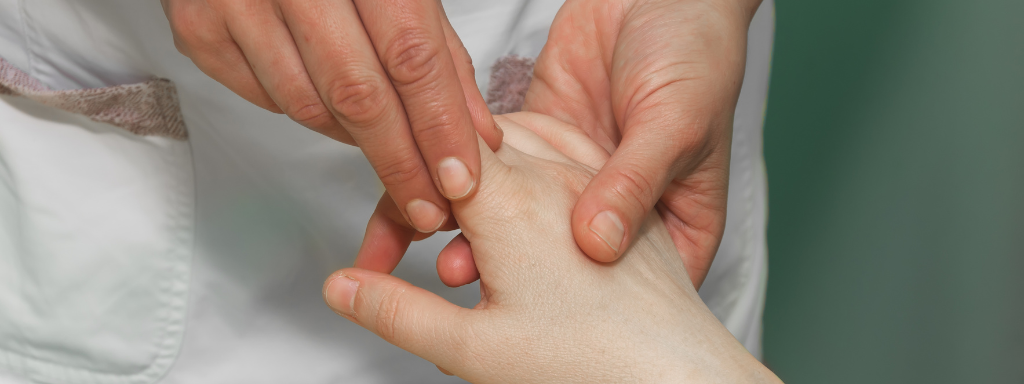What is massage therapy in oncology?
Oncology massage therapy is a specialized type of massage that aims to promote physical and psychological well-being and relaxation in people living with cancer.
During oncology massage therapy, the massage therapist uses various massage therapy techniques and approaches (e.g. Swedish, Californian, scar tissue massage, etc.) in order to adapt the treatment to the person’s reality and needs, as well as to their physical, psychological and emotional state.
The approach is intended to be gentle and individualized, since the body of the person who is going through cancer is very much solicited by the disease and its medical treatments.
BENEFITS OF MASSAGE THERAPY IN ONCOLOGY
Going through an episode of cancer is trying on a physical, psychological and emotional level. Massage therapy, through its holistic vision, aims to soothe the body and mind. More specifically, oncology massage therapy offers many benefits to the person living with cancer* [1-9]:
- Pain relief
- Physical and psychological relaxation
- Reduction of stress and anxiety
- Relief from some of the side effects of oncology treatment (e.g., nausea, fatigue)
- Improved efficiency of the immune system
- Improved quality of life for people with cancer-related lymphedema
*Massage therapy is a complementary approach to medical treatment which, when adapted to the individual’s condition and practiced by a well-trained and competent massage therapist, can help relieve the symptoms of many diseases, including cancer. Massage therapy in oncology is therefore part of an interdisciplinary vision and should be provided as a complement to other health disciplines (medicine, nursing, psychology, etc.)
CONTRAINDICATIONS
As with other massage techniques, oncology massage therapy may be contraindicated in the following situations
- Fever
- Infection (e.g. skin infection, flu, etc.)
- Open wound
There are also precautions to massage in oncology which, without being absolute contraindications, should be taken into account by the massage therapist (non-exhaustive list):
- The nature of the cancer and its location in the body
- Oncology treatments received (e.g. chemotherapy, radiotherapy)
- Prescribed medications (e.g., anticoagulants, pain medication)
- Recent surgery
In order to ensure safe massage and avoid injury, adaptations to the massage may be necessary. For example, the massage therapist will favour gentler manoeuvres for a person receiving painkillers. Since the medication reduces the pain and the feeling of pain, too much pressure during the massage may not be perceived correctly, which could cause bruising. Similarly, the massage therapist should avoid massaging a newly operated area of the body directly until the healing process is complete.
COURSE OF THE SESSION
Oncology massage can take place in the massage therapist’s office, at the client’s home, or directly in a health care facility (e.g., cancer centre, hospital, etc.). Most often, the massage is given on a massage table or chair. It can also be given while the person is receiving chemotherapy.
The session always begins with an information gathering session, which is more or less exhaustive depending on the duration of the treatment and its objective. The massage therapist will ask the client questions about their health, symptoms and treatments. This information will allow the massage therapist to identify any contraindications to the massage and to adapt the treatment to the client’s state of health and current needs.
Since oncology massage therapy aims to improve well-being, gentle, shallow techniques and manoeuvres are generally preferred throughout the treatment.
The duration of the massage may vary depending on the context. For example, a table massage will last about an hour, whereas a chair massage during chemotherapy treatment will be shorter.
ON THE SAME THEME
Massage therapy in oncology at the Fondation de la massothérapie
Massage therapy at the Fondation québécoise du Cancer
FOR MORE INFORMATION ON MASSAGE THERAPY
The benefits of massage therapy
Massage therapy adapted to different health conditions
RÉFÉRENCES
[1] Lee, S. H. et coll. (2015). Meta-analysis of massage therapy on cancer pain. Integrative cancer therapies, 14(4):297-304.
[2] Campeau, M. P. et coll. (2007). Impact of massage therapy on anxiety levels in patients undergoing radiation therapy: a randomized controlled trial. Journal of Society for Integrative Oncology, 5(4):133-138.
[3] Karagozoglu, S. et Kahve, E. (2010). Effects of back massage on chemotherapy-related fatigue and anxiety: Supportive care and therapeutic touch in cancer nursing. Applied Nursing Research, 26(2013):2010-2017.
[4] Institut national d’excellence en santé et en services sociaux. (2011). Traitement du lymphoedème secondaire lié au cancer [PDF]. Repéré à https://www.inesss.qc.ca/fileadmin/doc/AETMIS/Rapports/Cancer/INESSS_resume_lymphoedeme_FR.pdf
[5] Hernandez-Reif, M. et coll. (2005). Natural killer cells and lymphocytes increase in women with breast cancer following massage therapy. International Journal of Neuroscience, 115(4):495-510.
[6] Billhult, A. et coll. (2009). The effect of massage on immune function and stress in women with breast cancer – A randomized controlled trial. Autonomic Neuroscience, 150(1-2):111-115.
[7] Lesage, P. et Portenoy, R. K. (1999). Trends in cancer pain management. Cancer Control, 6(2):136-145.
[8] Cassileth, B. R. et Vickers, A. J. (2004). Massage therapy for symptom control: outcome study at a major cancer center. Journal of Pain and Symptom Management, 28(3):244-249.
[9] Toth, M. et coll. (2013). Massage therapy for patients with metastatic cancer: A pilot randomized controlled trial. Journal of Alternative and Complementary Medicine, 19(7):650-656.


